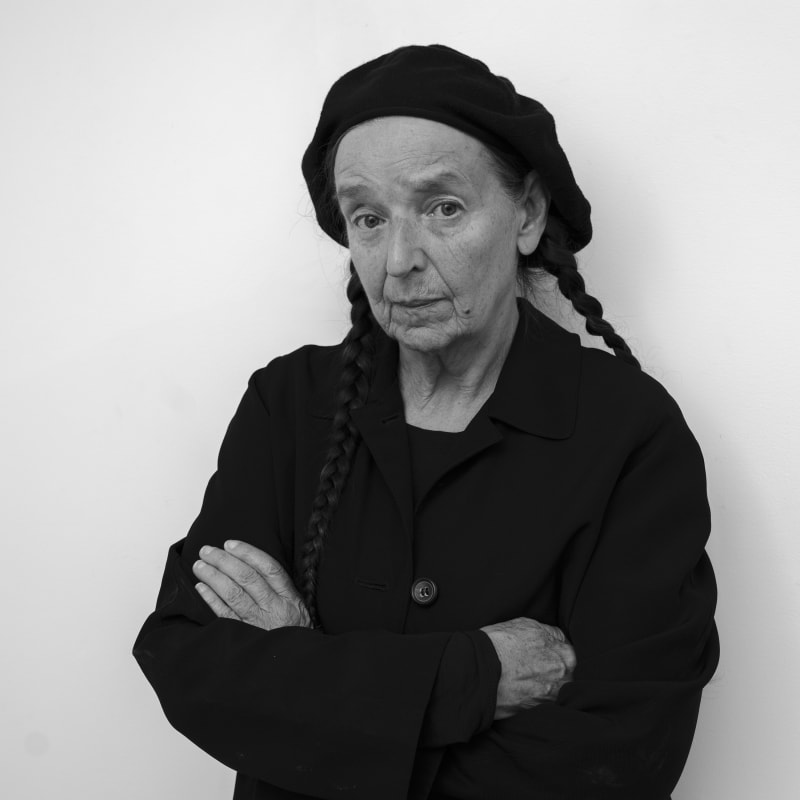Sixteen of the recent linocuts are published in “American Fascism Now,” a $10 pamphlet similar to the cheap antifascist chapbooks produced by John Heartfield, an artist in Nazi-era Germany. All the prints are available through Galerie St. Etienne at relatively accessible prices, starting at $250. The large paintings top out at $30,000, a modest price by art-world standards.
Even though her work has been collected by major institutions, including the Metropolitan Museum of Art, “it’s is not art-world art,” said Jane Kallir, the director of Galerie St. Etienne. Ms. Kallir noted that the artist had constantly argued against raising her prices.
“Sue wants her work to reach people who are being affected by the political and economic problems she addresses, not try to sanitize it as art,” Ms. Kallir said. Ms. Coe has a huge following with colleges and universities, where she frequently has exhibitions and speaks to students, many of whom are receptive to her evangelical messaging on eating meat and climate change.
“I make vegans,” Ms. Coe said. “That’s my role in life.”
Ms. Coe received a scholarship to study illustration at the Chelsea College of Art in London, then went on to study at the Royal College of Art. She moved to New York City in 1972 with $100 and got her first freelance job at The New York Times, illustrating an article on how to make roast duck.
“I drew the duck as a revolutionary going to the guillotine,” recalled Ms. Coe, whose art director was shocked at what she turned in but didn’t have time to reassign. While the artist was not yet a full-fledged animal activist, “I knew to do that job from the duck’s point of view,” she said.
She continued working on print assignments, slipping edgy work through the editorial process and forging a style influenced by British caricature (also a touchstone for Francisco de Goya) and German expressionists such as Käthe Kollwitz, George Grosz and Otto Dix.
Ms. Coe’s personal artistic breakthrough came in 1983, when she received an assignment to illustrate a story in a local magazine about a gang rape in New Bedford, Mass. (The movie “The Accused” was based on the story.) The illustration she turned in was censored by the magazine, cut in half before publication without her permission.
In her tiny apartment on the Upper East Side, Ms. Coe reworked a version of the illustration in paint on a 7-by-9-foot canvas, ripping up the original drawing and including the pieces as collage in the larger composition.
“That’s the one where it came together,” she said. “That, for an artist, happens once every decade.” She added that she never thought anyone would buy it.
“Woman Walks into Bar — Is Raped by Four Men on the Pool Table — While 20 Watch” was shown in the first of two commercially successful solo gallery shows for Ms. Coe at the PPOW gallery and purchased by the influential collectors Werner and Elaine Dannheisser, who donated it to the Museum of Modern Art. Ms. Coe later left PPOW because “she didn’t want to be the rising star of the East Village,” said Wendy Olsoff, the gallery’s co-founder — who credits the artist’s vision with influencing the gallery’s politically oriented direction to this day.
The seminal painting was part of the 2018 exhibition “Sue Coe: Graphic Resistance” at MoMA PS1. The exhibition also included drawings made by Ms. Coe of homeless people, immigrants, prostitutes and the inside of slaughterhouses — people she had observed and places she had infiltrated, equipped only with her sketchbook and pencil. “It’s direct witnessing without reducing or making this anything other than the truth I saw exactly,” Ms. Coe said.
“Sue’s always been good at understanding who and what has lived at the margins of visibility and compassion,” said Peter Eleey, the chief curator at MoMA PS1 who organized the show. “In her mind, mechanized industrial slaughter had a relation to Europe in the 1940s. Those kinds of equations between animal life and human life are profoundly uncomfortable for us to consider.”
In a new print on view at Galerie St. Etienne, Ms. Coe spells out her call for action. A donkey and an elephant, stand-ins for the opposing political parties, look sad and vulnerable while wearing protective medical masks. Together, they present a sign: “United Front Against Fascism/Trumpism VOTE.” A rider below reads: “Americans opposed to being gassed, virused and putting children in cages.”
Of the sympathetic representation that places Democrats and Republicans in the same boat, Ms. Coe conceded that it might be seen as optimistic, even sweet.
“It’s OK,” she said. “We can be sweet sometimes.”
Because of an editing error, an earlier version of this article misstated the status of Peter Eleey, who organized "Sue Coe: It Can Happen Here." He is the chief curator at MoMA PS1, not the former chief curator.
